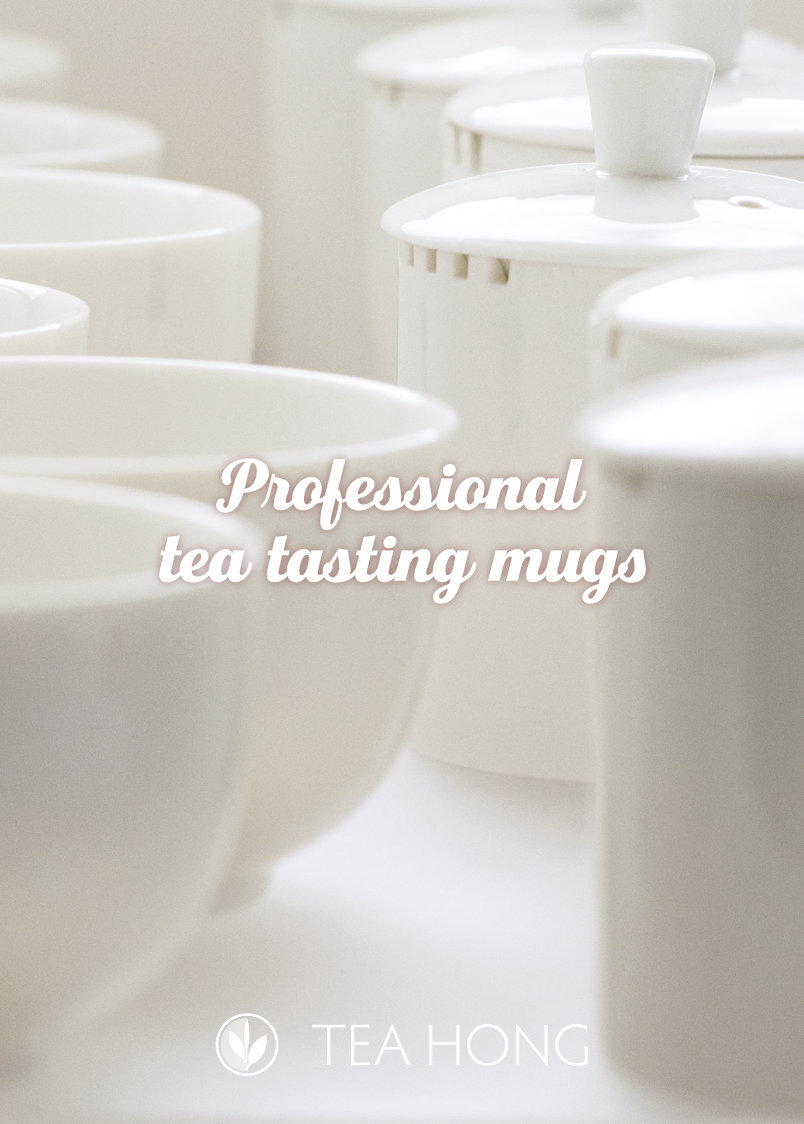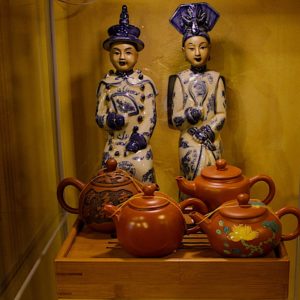Teaware: The Gaiwan

160 ml blue china gaiwan with sancai glaze. Hand-thrown porcelain. Notice the extremely thin rims of both the bowl and the lid. Great for handling during tea-making and drinking, but need a lot of care in cleaning.
Materials
Porcelain
A hand-thrown porcelain gaiwan is a good choice when heat management is concerned. The rim of the bowl can be kept quite thin (around or less than 0.5 mm) while the thickness towards the bottom can be 2.5 mm or more for effective heat retention. The thinness of the rim makes it easy for the material in that area to cool down quickly for handling. A 160 ml hand-thrown one with thin rim can hold the heat one time better than the 130 ml, 1.5 mm one, because of the gradual thickness of the bowl wall and a slightly larger size.
One drawback is its relative higher price. Semi-mould-made ones are way more affordable.
Porcelain is my ultimate recommendation whether it is hand-thrown or semi-mould-made. It is easy to clean, lightweight, and most effective for managing heat during infusion. It is also very affordable.

A very fine mould cast porcelain gaiwan. 130ml, white porcelain. Notice when it is nicely made, the material thickness at the rim is quite thin too. Although the thickness distribution at the body is not so nice as a nicely hand-thrown one, the price is many times more efficient.
I always go for a white one for minimum distraction. If you prefer colour glazes or decorations, make sure the inside of the bowl is white or white with minimal decorations. That way the colour of the infusion can be easily observed.
Mould-made ones are not as desirable, especially those with so heavy glazed decoration that the rim becomes too thick and the lid clumsy to handle. They may be higher price than semi-mould made ones, but they are much lesser utilitarian values.
Yixing Clay
Since a gaiwan is made for versatility in the first place, I really don’t see the point of using a Yixing gaiwan, unless you use only one choice of tea with it regularly. As I shall mention in the chapter for Yixing pots, a piece made of Yixing has to keep to a particular tea variety.
Glazed Stoneware
Stoneware ones are usually mould-made and because of the nature of the material, usually quite thick. With the thickness, heat does not dissipate too readily at the rim, where you have to hold for decanting. If you are comfortable handling the heat, the thickness and the weight, however, a stoneware one is a good consideration when you prefer long infusion time, because of its superior heat conservation capability. Make sure it is well glazed for easy cleaning.

220 ml gaiwan with spout. Glazed stoneware. Clever design for those beginning to use the gaiwan. However, using the standard porcelain to begin with is more effective learning.
Glass
Glass does not hold heat so well, particularly towards the bottom, where it is the thinnest — mould-made ware is limited by the method of production. Heat gathers undesirably at the rim and the button of the lid, where the material is thicker, and makes handling uncomfortable. Pouring performance is generally poor in glass gaiwans. The only advantage of it is its transparency for show reasons.
Lacquer
These are basically bowls and not suitable for infusion use. Most popularly available ones are artificial lacquer and smells quite bad on contact with heat. Most designs are with lids that have a small height of vertical wall at the rim. The rim of the bowl is also quite straight. These are not gaiwan designs, but lidded bowls for general use.











Hi Teaguardian,
First of all, great thanks for such a trove of detailed information that you provide for the curious for free! I did spend some time going over a couple of studies mentioned in references and I can appreciate the amount of time and effort put into this work.
After getting some education on Teaguardian and experimenting with longer infusion times I was able to get more intense and well rounded flavor with 1g/100ml ratio and ~5 min time than with all that non-sense of using 6g/~5-20sec. Thanks to Leo for setting the score straight on this. I’m not wasting precious leaves in that fashion any longer.
That brings me to my question about the gaiwan. I’ll start with saying I don’t have a properly made one so my own experience in this area is close to nil, but I’m trying to understand if there is a point in investing in it for me.
After reading this article, I can appreciate such qualities as versatility and the relative ease of use of the gaiwan, I am curious how it fares in performance compared to a good tea pot? Good in my definition is properly made from proper materials like outlined on Teaguardian. I’m not considering specialist grade items (out of reach for now). My understanding is that good teapot would have a better insulating factor with thicker walls and would fare better than thin walled gaiwan for ~5 min infusions. I spent some time on Tea Hong and reviewing brewing instructions for multiple teas and I only found a couple of teas for which short infusion (close to 30s) were recommended to get better results. I can see those teas as being a good use case for the gaiwan since difference in heat loss between the tea pot and a gaiwan is probably nigligent under such short timeframe and speed and easy of decantation is definitely an asset. But those teas are few and far in between so would probably not be part of my daily routine for foreseeable future.
Also, I keep seeing different resources claim that gaiwan is “Indespensable tool and a must have for a true tea connoisseur”. This claim most often is not substantiated by any further information so I wonder if it’s just another case of parroting or I’m missing out on some truly useful properties of a gaiwan aside from the 2 mentioned in the beginning of my question? Gaiwan is cheap but would it be the right tool for a person who is not into exotic teas yet and who likes full bodied well rounded flavor?
Thanks,
O